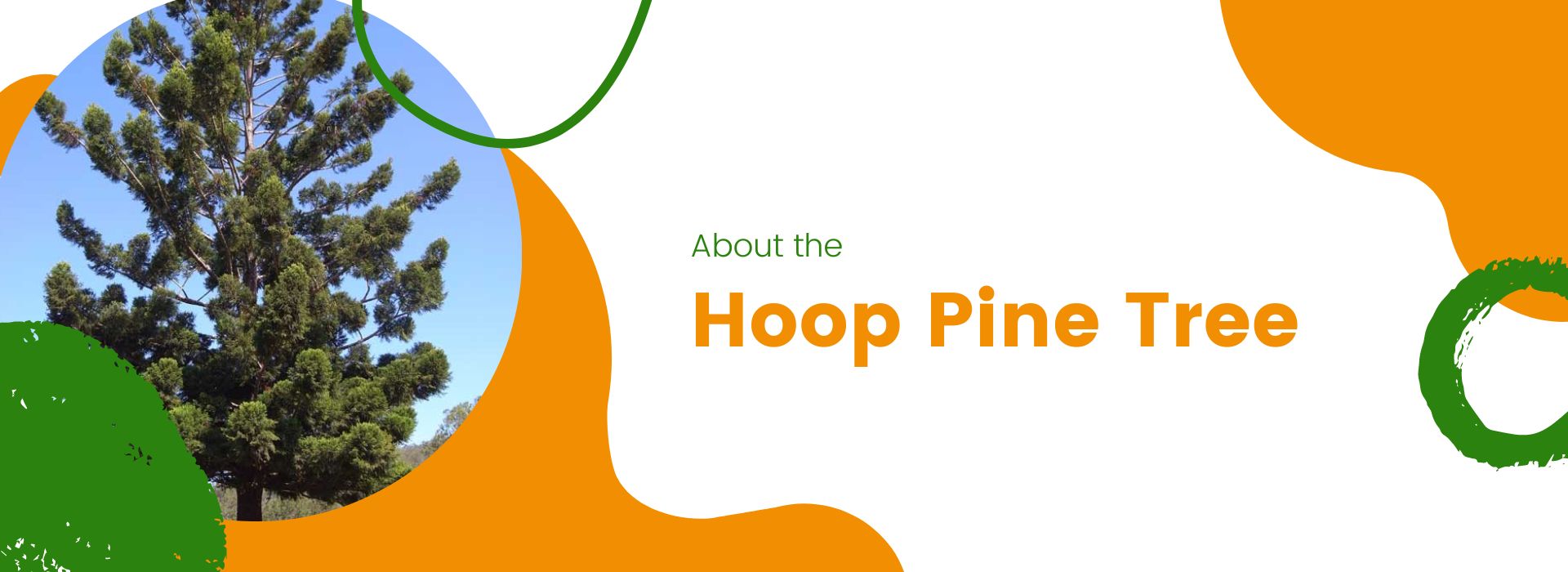About The Hoop Pine Tree (Araucaria cunninghamii)

The Hoop Pine (Araucaria cunninghamii), also known as Queensland Pine or Colonial Pine, is a magnificent tree native to the eastern coast of Australia, from the Hastings River in New South Wales to Far North Queensland. It can also be found in some areas of Papua New Guinea. With its towering height of up to 50 meters and a diameter of 1.8 meters, the Hoop Pine is an impressive species belonging to the Araucariaceae family.
(Looking for a Hoop Pine Mulch product? Contact the team at Wellers Hill Hardware today)
<!–Call To Action Thin Start–>
<div align=”center” class=”cs-cta-thin”>
<p style=”color: #fff;”><a href=”tel:07 3848 1682″ style=”color: #fff;”>For all your Brisbane garden and landscaping supply needs call us today on 07 3848 1682</a></p>
</div>
<!–Call To Action Thin End–>
Distinctive Characteristics
One of the most striking features of the Hoop Pine is its straight, cylindrical trunk, which sets it apart from other trees in the region. The bark undergoes a transformation as the tree matures. Young trees exhibit smooth bark that may peel off around the stem circumference. However, in mature trees, the bark becomes rough and dark brown to nearly black. The name “Hoop Pine” comes from the hoops that become apparent when the bark is stripped from the trunk.
Occurrence and Cultivation
The Hoop Pine thrives in drier rainforests, and its natural range spans from northern New South Wales to Queensland, extending inland up to 300 kilometers in some areas. In addition to its natural occurrence, the Hoop Pine is cultivated in plantations, predominantly in southern Queensland. These plantations provide a steady supply of sawn timber, making it more readily available for various applications.
Versatility and Uses
One of the reasons the Hoop Pine is highly valued is its versatility. It serves a multitude of purposes across various industries:
1. Engineering:
Used as preservative-treated poles in pole-frame construction and power poles.
2. Construction:
Popular as a general-purpose softwood, used in house framing, flooring, lining, and mouldings.
Impregnated with preservatives for external or round forms in fencing, pergolas, landscaping, retaining walls, and playground equipment.
Utilized in structural plywood and particleboard production.
3. Decorative:
Highly sought after for furniture making, plywood, joinery, turnery, and carving.
4. Mulch:
Offering impressive longevity and effective weed prevention, hoop pine mulch is particularly ideal for sloped areas and wind-prone locations, ensuring it remains firmly in place and enhances plant growth while adding an appealing aesthetic to gardens and public spaces alike.
5. Other Applications:
Valued in boat building for masts, planking, deck beams, frames, and marine plywood.
Used in aircraft construction, wood wool, paper products, arrow shafts, broom handles, cooperage, beehives, brushware, doweling, blind rollers, draughtsman’s implements, boat oars, musical instruments (violin and guitar bellies), scaffold planks, and match splints.
The Hoop Pine’s impressive range of applications reflects its outstanding properties and characteristics.
Wood Properties and Durability
The wood of the Hoop Pine boasts a density of approximately 560kg/m3 at 12% moisture content, with seasoned sawn timber yielding about 1.7m3 per tonne. It falls into different strength and stress grades, depending on whether it is unseasoned or seasoned. The wood is rated soft on a 6-class scale in terms of hardness, making it easy to work with hand tools.
However, it’s essential to consider the wood’s durability when using it for specific purposes. Above-ground applications have a Class 4 durability, with a life expectancy of less than 7 years. Similarly, in-ground applications have a Class 4 durability, with a life expectancy of less than 5 years. The wood is not susceptible to lyctine beetles, but it is not resistant to termite attacks.
Processing and Finishing
The Hoop Pine requires proper seasoning to prevent distortion, especially for framing sizes, which should be dried at high temperatures. Boards can be air-dried or kiln-dried at conventional or high temperatures. The wood machines and turns well, resulting in a smooth surface, and it can be easily fixed with standard fittings and fastenings. Gluing is also satisfactory, and the wood readily accepts stains, polishes, and paints, making it ideal for various finishing techniques.
Identification and Sustainability
Identifying the Hoop Pine is relatively straightforward. The sapwood is indistinct from the heartwood, with the heartwood showcasing a range of pale cream to light yellow-brown colors. The texture is smooth and uniform, with a straight grain, except around knots. The growth rings are not prominent, and false annual rings may sometimes be present as narrow and indistinct intermediate latewood bands.
Sustainability is a significant consideration for any timber resource. Fortunately, the Hoop Pine is cultivated in plantations, which helps mitigate pressure on natural forests. Sustainable management practices ensure the continuation of this valuable timber resource for generations to come.
The Hoop Pine (Araucaria cunninghamii) stands tall as a versatile and valuable timber resource. With its straight trunk, distinct bark, and fine-textured wood, it offers a wide range of applications across engineering, construction, and decorative industries. Despite its softness, it can be preserved and treated to enhance its durability and lifespan. Proper processing and finishing techniques make it an excellent choice for many projects.
As we as a people continue to prioritize sustainability, the cultivation of Hoop Pine in plantations ensures a responsible approach to harvesting this remarkable tree. As consumers and industries alike embrace eco-friendly practices, the Hoop Pine is poised to remain an integral part of our lives, contributing to the beauty and functionality of countless creations for years to come.
Resources
https://www.business.qld.gov.au/industries/farms-fishing-forestry/forests-wood/properties-timbers/hoop-pine

